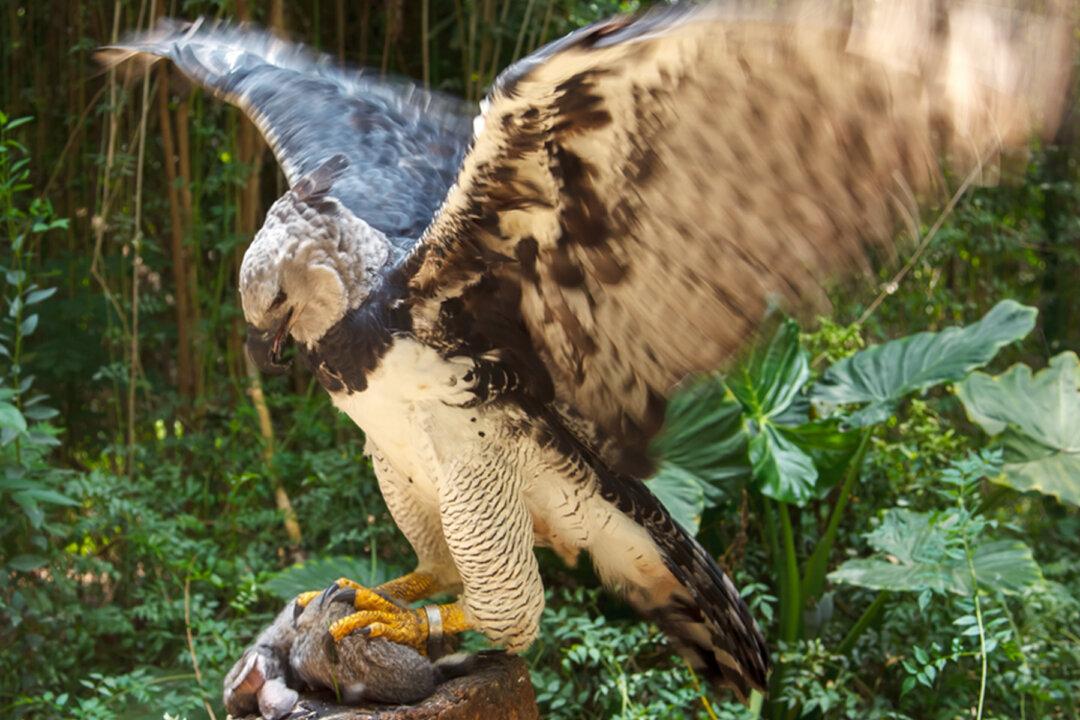The harpy eagle is a magnificent bird of prey that can stand up to 3 feet 5 inches in height. Resting happily at the top of its food chain, the harpy lives on (among other things) a diet of lizards, birds, rabbits, monkeys, and even sloths.
It also just so happens to be the largest eagle in the world.





